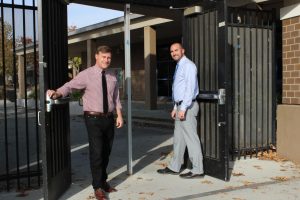Contra Costa County reaches out to hard-to-count communities
February 21, 2020
The 2020 Census is set to collect responses from every household in the United States starting on Apr. 1, but there are many communities that are difficult to account for, known as hard-to-count (HTC) communities. Contra Costa County is doing its part to make sure the people in these communities are represented in the census because the data, if accurately collected, benefits the allocation of federal funding.
One effort that Contra Costa is doing to account for these populations is taking advantage of the Census’ Community Partnership Engagement Program (CPEP).
“There are 1500 ‘partnership specialists’ hired across the country, including several hundred in California,” Josh Green, a media specialist for the 2020 Census, said. “Those who work in the CPEP program have deep experience living and working in their communities and they make connections with local businesses, government agencies, nonprofits and many other institutions to encourage participation.”
CPEP uses various maps to decide which locations to reach out to. The Response Outreach Area Mapper (ROAM) is used to provide socioeconomic and demographic features of areas throughout America. The Public Policy Institute of California (PPIC) is an interactive map that highlights HTC communities and provides explanations as to why these areas are difficult to account for. These two maps guide CPEP workers to provide resources for these communities.
“The CPEP effort in 2020 has far more people and resources than the same effort in 2010,” Green said.
CPEP workers help reach populations with a large number of immigrants, noncitizens, those in poverty, and non-English speakers, to name a few groups. According to the PPIC map, 11.5% of people living in Contra Costa are noncitizens. Additionally, 7.7% of households in Contra Costa have a likelihood of no response. It is critical that these people are accounted for so they can receive proper representation when government funds are allocated, whether it be for public services, infrastructure, etc.
“These efforts are made year-round, every year at the Census, but the work of CPEP began as people were hired in the summer of 2019, and it will last through the count which officially ends July 31, 2020.” Green said. “Our mission is to work in every state and territory, and that’s where we are.”



